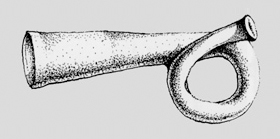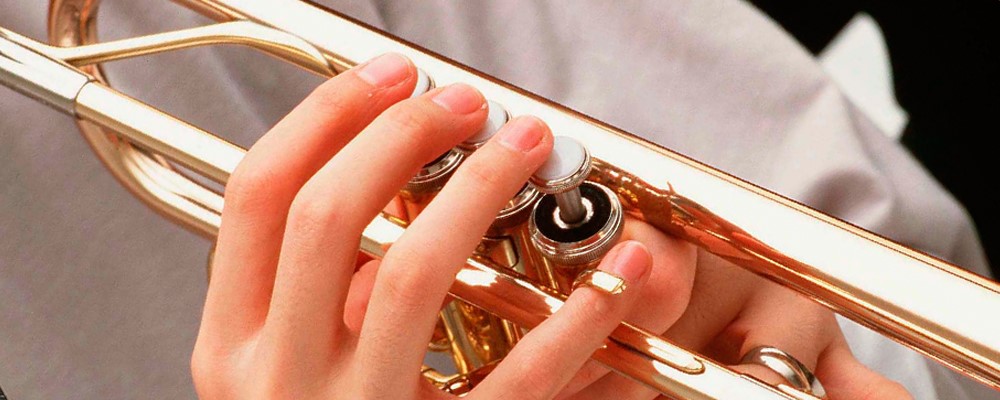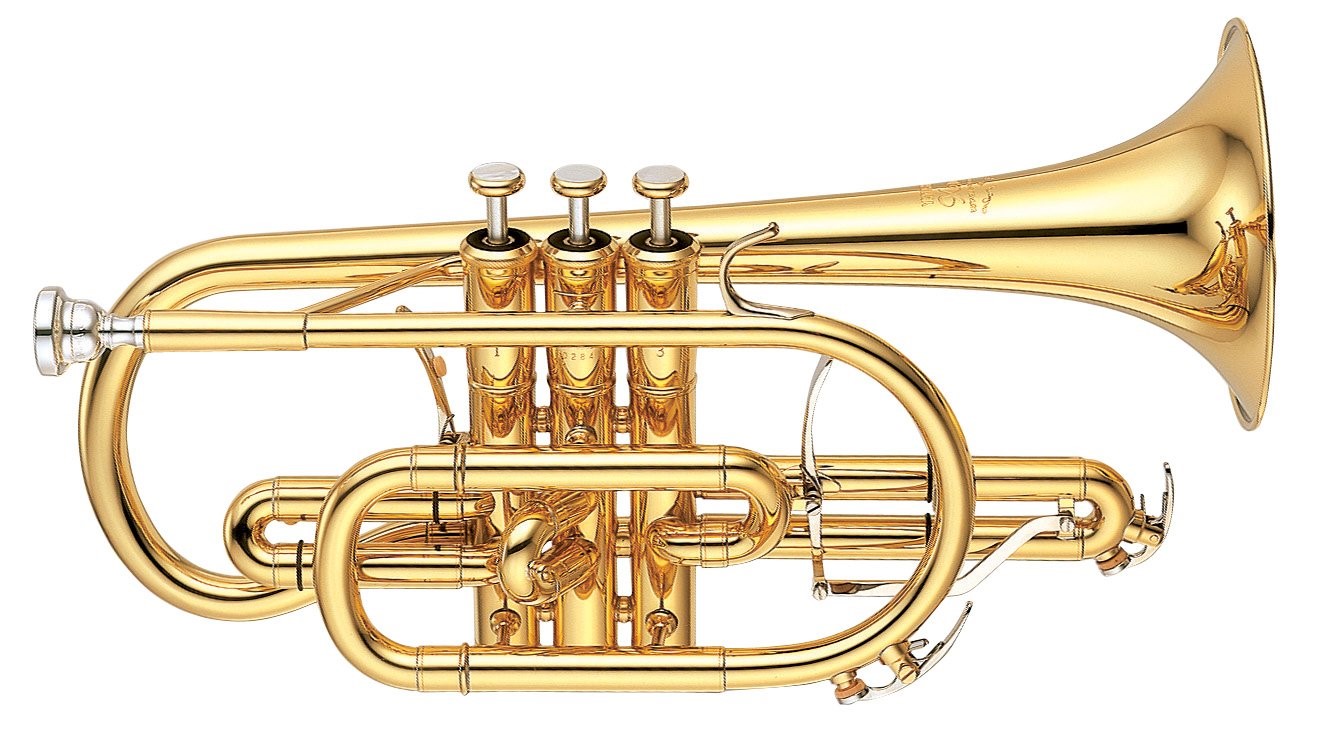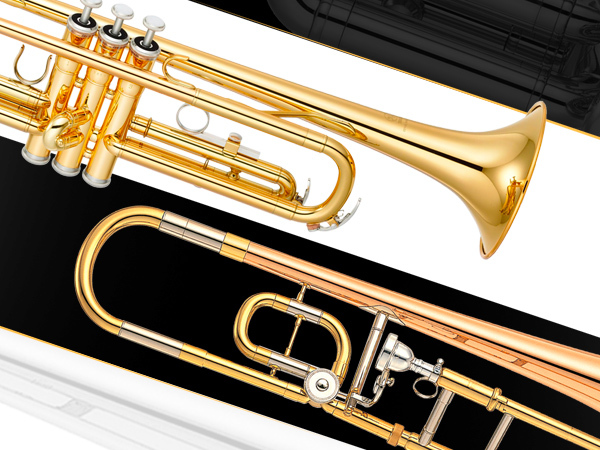What’s the Difference Between a Trumpet and a Cornet?
They’re not the same … and perhaps not even as similar as you may think.
At first glance, trumpets and cornets appear to be very similar. But they actually have some significant differences, as well as slightly divergent lineages. Let’s take a closer look at these two distinctive brass instruments.
Origins
Horns have been used throughout history, for everything from battles to birthday parties. Rudimentary horns were made from many different materials, including wood, clay and even human bone. Examples date back to 1500 B.C. in Egypt, China and Scandinavia. The Moche people of ancient Peru painted images of trumpets as far back as 300 A.D. In the ancient Greek and Roman eras, metallic trumpets were used for marching in wartime. Eventually, almost all European royalty had trumpet bands that played military fanfares, although it wasn’t until the seventeenth century that the trumpet came to be used in musical ensembles.


Early trumpets had a very simple shape, with a flared bell at the end. The trumpeter could produce only a very limited number of notes by varying his lip movement and the speed of his breath. When it was necessary to play songs in different keys, differently tuned horns had to be used. For the trumpeters of the era, looking after all these instruments and carrying them around was very troublesome.
All this changed when, in around 1810, the valve was invented. By changing the path taken by the trumpeter’s breath, a valve serves to alter the length of the instrument’s interior, limiting how far air has to travel inside the “bore” and resulting in a greater number of possible notes. Valves made it easy to change the length of the tube, thereby enabling chromatic scales to be played on the trumpet.
The makers of trumpets were, however, slow to implement valves, which led to the development of the cornet in the 1820s. For many years, composers wrote separate musical parts for the two instruments. The trumpet would simply play blaring flourishes while the cornet, with its system of valves, would handle the more delicate, nuanced melodic requirements.
Today, there are two types of valves: piston and rotary. The two function differently and therefore produce different tones. Piston valves, which are more responsive, help to create a quicker, brighter sound compared to the rounder tone produced by rotary valves.

In the jazz bands of the early 20th century, the cornet was initially preferred to the trumpet. One of the earliest practitioners of the genre, Charles “Buddy” Bolden, was a cornetist, and the legendary Louis Armstrong also began on the cornet before switching permanently to the trumpet in 1926, when its brighter, more pronounced sound started to become more popular. Other famous and influential trumpeters who have stretched the boundaries of the instrument include Miles Davis and Dizzy Gillespie.
Similarities Between the Trumpet and Cornet
Beyond the fact that both trumpet and cornet are brass instruments, they are also played in a similar fashion. Sound is created in each by buzzing one’s lips into a metal mouthpiece. A player can produce different notes by subtly tightening or loosening their lips, facial muscles and/or jaw (that is, their embouchure), as well as by pressing different valve combinations (see below). Higher notes are produced by tighter contractions and lower notes by looser ones.


Modern trumpets and cornets have three valves. As described previously, valves effectively alter the length of the instrument’s interior, making it possible to play every note in each musical scale. The note played is determined by the specific combination of valves the player presses on the horn, along with the embouchure. If the player doesn’t press any valves, the instrument is said to be in “open position,” in which case the aperture of the embouchure (that is, the shape and size of the opening in the lips) is the sole factor in determining the note that is sounded.
Differences Between the Trumpet and Cornet
While both instruments look generally similar, a cornet is smaller than a trumpet, and often rounder in shape. Another big difference is the size and shape of each instrument’s interior chamber, known as its bore.
A trumpet has a cylindrical bore, which results in a bright, piercing sound, while a cornet has a continuously conical bore, which provides a warmer sound. (Their larger-sized brass instrument cousin, the flugelhorn, offers an even softer tone due to its larger, rounder and even more conical bore.)
“As with all wind instruments,” explains Yamaha Product Specialist Austin Snowden, “everything affects everything. For example, a large bore trumpet versus a medium bore trumpet is going to feel different. The large bore will require more air to fill up the tubes and that can sometimes drastically change how a player uses their energy with the instrument.”

In addition, cornet mouthpieces are deeper than most trumpet mouthpieces, which also contributes to that instrument’s warmer, less piercing sound, making the cornet better suited for some brass ensembles. The cutting sound of trumpets, in contrast, make them suitable for use in a wide range of musical genres, from jazz to orchestral.
Instrument Keys and Types
There are several different types of trumpet and cornet, including the smaller piccolo trumpet and the soprano cornet. The piccolo trumpet is half the size of a normal trumpet and is pitched an octave higher. Piccolo trumpets are also commonly made with four piston valves, not three, as with standard trumpets.

B-flat is by far the most common key for trumpets. “These kinds of trumpets can be seen in all types of genres and ensembles,” says Snowden. “C trumpets may be the second most common; they are more often used in orchestral settings or if a wind ensemble piece calls for it specifically. These trumpets have a slightly different sound characteristic than a B-flat one, which is usually thought of as brighter. All the other key variations (i.e., D, E-flat, E, low F, and G) are typically specialty instruments.”
Cornets are also most often in the key of B-flat. However, E-flat cornets are sometimes used in brass band settings. Specialty cornets are also occasionally made in the key of C.
So next time you see what you think is a trumpeter playing a trumpet, look (and listen) a little more closely. What you actually may be seeing is a cornetist playing a cornet … or vice versa!
Yamaha offers a wide range of trumpets and cornets, from beginner-level to expert, for use in brass ensembles, jazz bands and orchestra.
Click here for more information about Yamaha trumpets.
Click here for more information about Yamaha cornets.
Click here to find a Yamaha trumpet or cornet dealer near you.
















